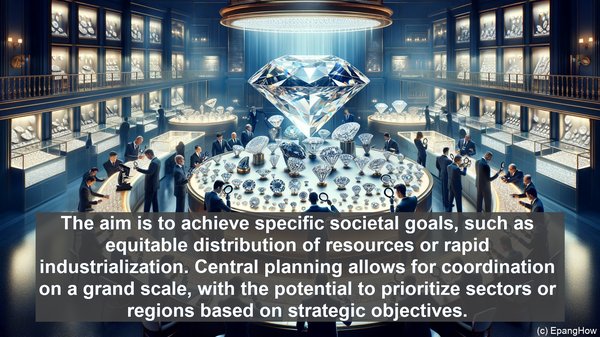Introduction: The Two Pillars of Economic Systems
Hello everyone! Welcome to today’s article, where we’ll be exploring the intriguing world of economic systems. At the heart of any economy, we find two distinct models: the market economy and the planned economy. These systems shape the way resources are allocated, goods and services are produced, and ultimately, how societies function. Let’s dive in!

The Market Economy: The Invisible Hand at Play
In a market economy, the forces of supply and demand reign supreme. Here, decisions about what to produce, how much to produce, and at what price are determined by the interactions of countless buyers and sellers. This decentralized approach allows for flexibility, adaptability, and a wide range of choices for consumers. It’s like a giant, intricate web, where each transaction has a ripple effect, shaping the overall market. The market economy thrives on competition, as it incentivizes innovation, efficiency, and quality. It’s a dynamic system, constantly evolving in response to changing circumstances.

The Planned Economy: A Symphony Conducted by the State
Contrasting the market economy is the planned economy, also known as a command or centrally planned economy. Here, the state takes the reins, making decisions about production, distribution, and pricing. The aim is to achieve specific societal goals, such as equitable distribution of resources or rapid industrialization. Central planning allows for coordination on a grand scale, with the potential to prioritize sectors or regions based on strategic objectives. However, it also means that individual preferences and the nuances of the market may not always be fully accounted for. The planned economy requires a robust bureaucracy to gather information, make decisions, and enforce regulations.
Efficiency vs Equity: The Trade-Off
One of the key trade-offs between these two systems is the balance between efficiency and equity. In a market economy, resources tend to flow to where they are most valued, leading to efficient allocation. However, this can also result in income disparities and the potential for market failures, such as monopolies or externalities. On the other hand, a planned economy can strive for a more equitable distribution, but it may sacrifice efficiency in the process. Finding the right equilibrium is a perpetual challenge for policymakers.
Real-World Examples: Shades of Grey
While these two models provide a useful framework, it’s important to note that in reality, most economies exist on a spectrum. Pure market economies, where the state has minimal intervention, are rare. Similarly, fully planned economies, where every aspect is controlled by the state, have become increasingly uncommon. Instead, we often see mixed economies, where elements of both systems coexist. For instance, many countries have market-based systems for most goods and services, but with government intervention in areas like healthcare, education, or infrastructure.
